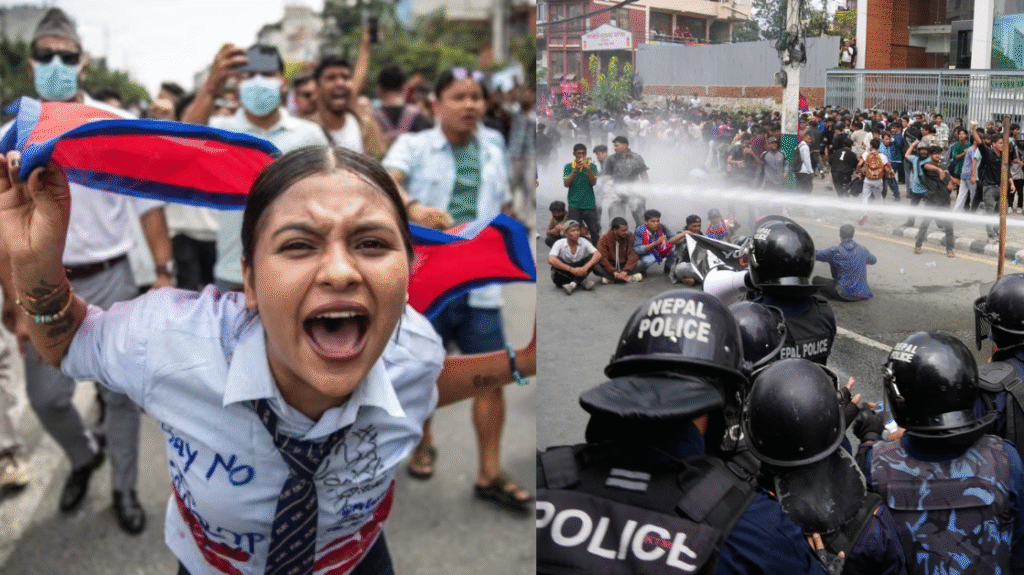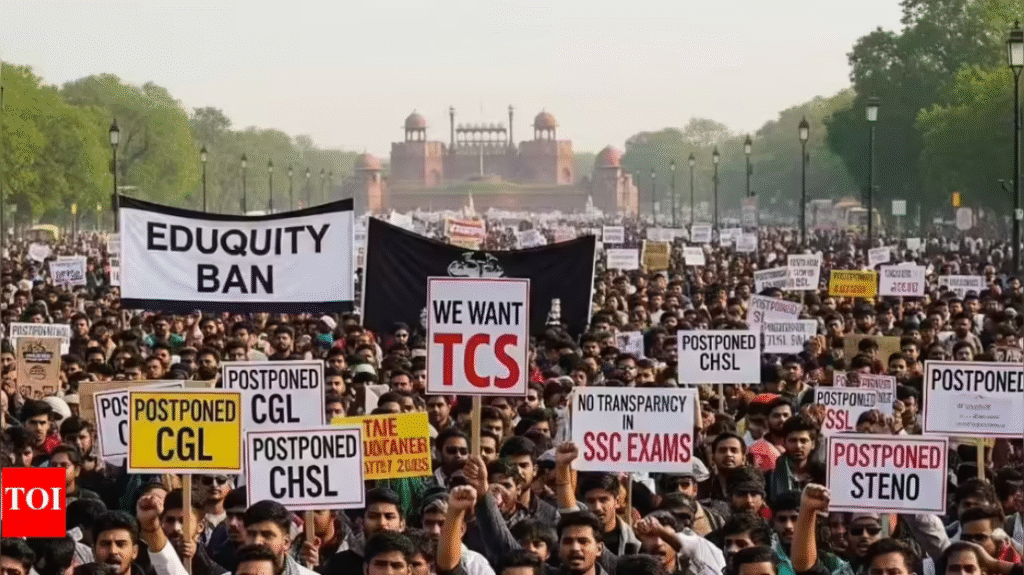Protests Erupt Over Nepal’s Social Media Ban
On September 4, 2025, the Nepali government banned 26 major social media platforms—including Facebook, X, WhatsApp, YouTube, and Reddit—for failing to register with authorities. Critics labeled the move an attack on free expression and political dissent.
Within days, thousands—predominantly young people from Generation Z—took to the streets. Demonstrations, primarily in Kathmandu’s Maitighar area and outside Parliament at New Baneshwor, grew violent as protesters tried to breach barricades, leading to clashes with security forces. Police used tear gas, water cannons, rubber bullets, and reportedly live ammunition to disperse crowds.
High Casualty Toll and Widespread Injuries
The protests rapidly turned deadly. At least 19 people were killed and around 347 injured, in Nepal’s deadliest unrest in years. Some media outlets reported a slightly lower toll, such as 14 dead and dozens injured.
Witnesses recounted scenes of chaos. One protester said, “They fired bullets which missed me but hit a friend who was standing behind me.” Many injured were rushed to hospitals on motorbikes or ambulances amid tear gas-filled streets.
Political Fallout: Curfew, Cabinet Emergency, Minister Resigns
In response to the unrest, authorities imposed a curfew in Kathmandu and deployed army units near government buildings. An emergency Cabinet meeting was held, but Prime Minister KP Sharma Oli initially refused to lift the ban.
However, under mounting pressure, Home Minister Ramesh Lekhak resigned, taking moral responsibility for the violence. Subsequently, the government announced the lifting of the social media ban and a judicial panel was formed to investigate the crackdown, with a report due in 15 days.
Legal Analysis: Freedom, Censorship & Accountability
Freedom of Expression vs Regulation
The social media ban raises questions under Nepal’s constitution and international law. Critics argue it violated civil liberties and democratic norms, particularly affecting youth voices through digital platforms.
Government Authority & Registration Mandate
While platforms failed to register as per new compliance rules, critics say regulatory bypass was used to stifle dissent, especially during a period of rising anti-corruption sentiment.
Use of Force & Human Rights Standards
Security response—especially firing on youth protests—may violate international human rights standards. The UN and Nepal’s Human Rights Commission have called for transparent investigations and accountability.
Ministerial Accountability
Home Minister’s prompt resignation signals political acknowledgment of the gravity of state action, though prosecutors and activists may seek deeper legal redress through the judicial committee.
The Role of Gen Z, Nepo-Kid Outrage & Symbolic Resistance
The movement was not just about digital access. It became a broader Gen Z rebellion against systemic corruption and elitism. Social media magnified complaints of nepotism, with memes targeting “nepo kids“—children of elites seen vacationing abroad while young protesters died at home.
Placards read “Shut down corruption and not social media”; slogans echoing fairness crowds in the protests highlighted deep societal fissures.
What Lies Ahead: Legal and Social Implications
- Transparent probe: The judicial committee must hold personnel accountable and preserve rule of law.
- Digital policy reform: Policymakers need balanced frameworks for platform regulation that respect civil rights.
- Youth engagement: Gen Z’s activism signals increasing demand for democratic participation, which can reshape Nepal’s political landscape.
- Regional ripple effects: Neighboring democracies may face similar challenges as governments attempt to regulate emerging digital speech.
Conclusion: A Turning Point for Nepal’s Democracy
Nepal’s Gen Z protests signify how digital rights and governance collide. A social media ban triggered mass unrest, undermined trust, and escalated into a crisis of political legitimacy.
The unrest calls for introspection—not only for Nepal’s legal framework on press and speech but also for how young citizens hold powers to account. If managed with credibility and transparency, this may be a moment of democratic deepening rather than repression.
To read more Indian Laws and news, visit Legal Guide India



